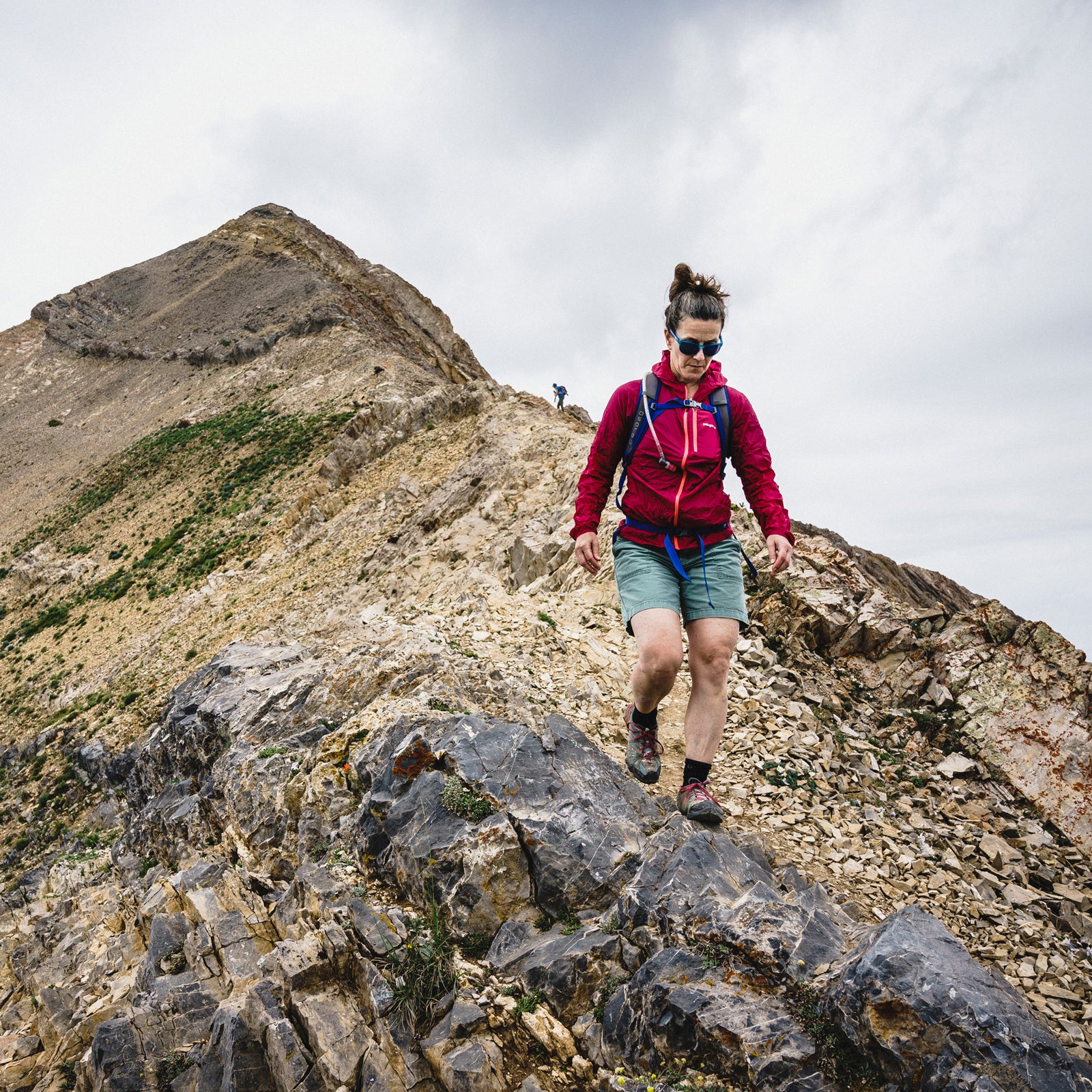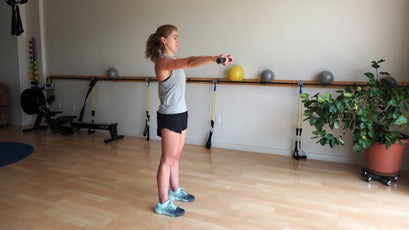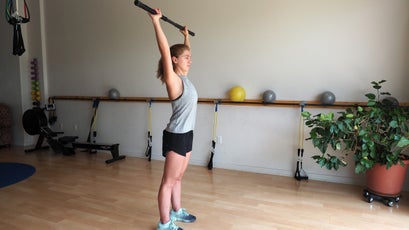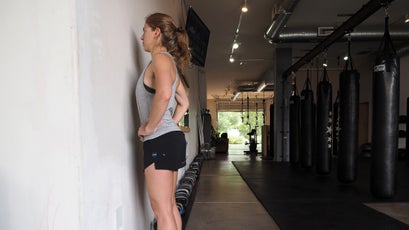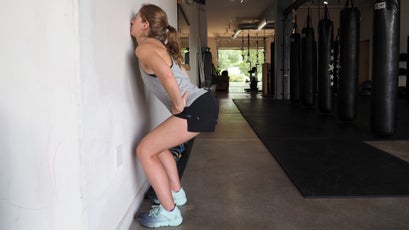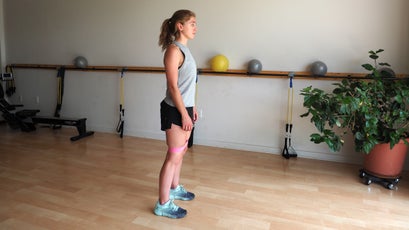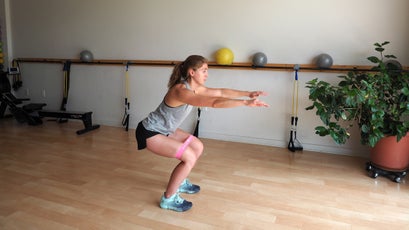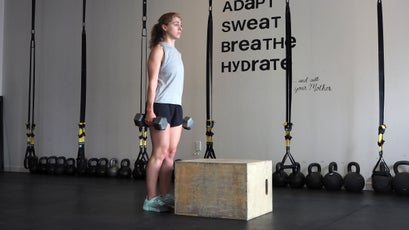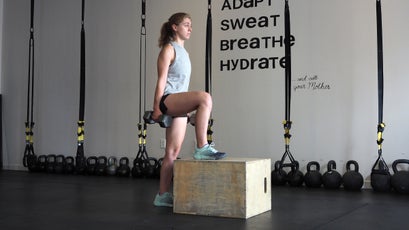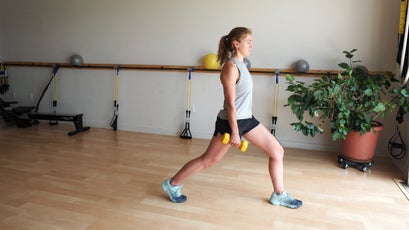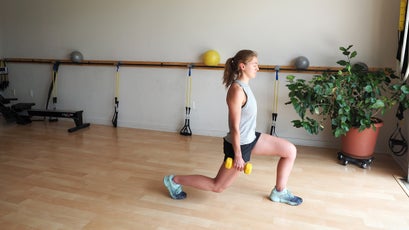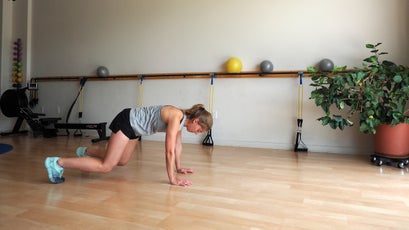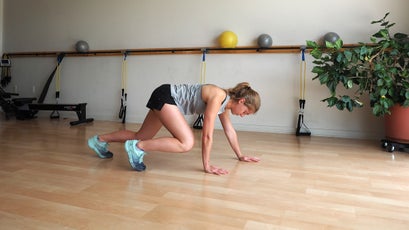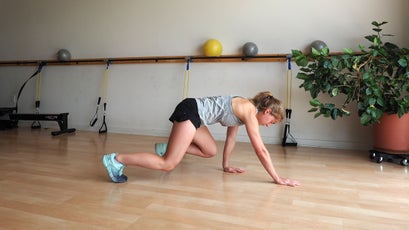Whether you’re training to tackle��a fourteener, a thru-hike, or just have fun on your local trails, a little gym time will go a long way��toward��improving your strength, stability, and resilience on rugged terrain. Hiking is still the best training for hiking, says Kathleen Stabler, a certified�� instructor and the owner of in Albuquerque, New Mexico. But adding a few simple exercises in the weight room will help you stabilize and strengthen��through the legs, hips, and core��and take your fitness to the next level.
“If you have three months or less to train, you’ll benefit most from spending the majority of your time actually doing the thing,” she says. “This will allow your body to adapt and get used to hiking��and give you plenty of time to practice carrying and using your gear. But stability and upper-body and core strength��are also major components of efficient hiking.”
For the weekend warriors out there:��try to get out for short hikes midweek, and plan for longer days on the weekends. Ideally, you want to increase your mileage by about��10 percent every week, but factor in difficulty—elevation gain and terrain—as well. “It’s generally not a good idea to increase both simultaneously,” says Stabler. As your distance and fitness increase, carry a pack with added weight for an extra workout. (Pro tip: bring water in jugs or reservoirs to carry��on the uphill, then dump it at the summit to save your knees on the downhill.)
If you’re a few months out from your big trip, do the first three exercises��two to three times per week, and hike as often as you can. If you have more than three months, keep hiking��and aim to do this complete workout twice��a week, with��a couple of rest days in between. Focus on form, not quantity of repetitions. If you can complete all reps and sets with ease, add additional weight to the exercise��when applicable.
Tools You’ll Need:
- A broom handle or four-to-five-foot length of PVC pipe
- A box or bench (midshin-to-knee height)
- Dumbbells
- Resistance bands
The Moves
Shoulder Opener
What it does: Warms up and improves mobility in the shoulders, which helps prevent shoulder injury
How to do it: Stand tall with your feet hip-width apart and your knees soft (never locked). Hold a broom handle or PVC pipe��in front of you with a wide grip. Roll your shoulders up, back, and down. Then, using your back muscles and keeping your arms straight, slowly raise the handle overhead until you feel a gentle stretch in your shoulders at the end range of motion. Hold this position for five seconds, then slowly lower the handle or pipe��back down for one repetition. Repeat.
Volume: Three sets of five to seven reps
Wall Squat
What it does: Warms up the legs and lower back, improves mobility in the hips and lower back, and trains a proper squat technique
How to do it: Stand facing a wall, a few inches away, and shift your weight to your heels. Place your fingers on the front of your hips, and gently guide them back as you bend your knees to sink lower into a squat. The wall prevents you from leaning too far forward and keeps your knees from going beyond your toes��to enforce proper form. Go as low as you comfortably can, pause, then slowly return to the starting position for one repetition. If balance or joint mobility is an issue, hold a small counterweight in front of you for assistance. “It does not matter how far down you go,” says Stabler. “Just focus on keeping the hips moving back.”
Volume: Three sets of six to eight��reps
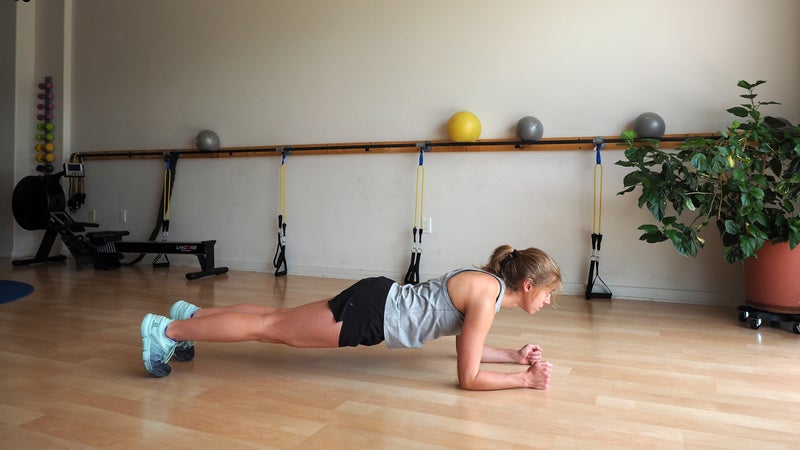
Plank
What it does: Builds strength and stability in the core muscles through an isometric hold
How to do it: From kneeling, place your forearms on the ground shoulder-width apart, with your elbows below your shoulders. Extend your legs directly behind you, with your feet together and toes tucked under so that your body forms a straight line from your heels to your head. Engage your core. Keep your back flat (no sagging, arching, or tipping the hips) and head up so your neck is in line with your spine. Hold this��position until you break form or begin shaking. Remember to breathe.
Volume: Hold until failure (loss of form). If you lose form in less than a minute, begin with multiple shorter holds (such as six reps of 15-second holds, with 15 to 30 seconds of rest between each), and work your way up to a minute and beyond.
Squat with Resistance Band
What it does: Strengthens the quads and glutes, while engaging the hip-abductor muscles to train correct knee position and stability
How to do it: Place a resistance band around both legs, above the knees, and stand tall with your feet hip-width apart. Hold your chest upright, pull your shoulders back and down, and engage your core muscles. Then shift your weight to your heels and squat, like you’re sitting in a chair, until your thighs are parallel to the ground. Push through the heels to stand back up. Drive your knees outward against the band throughout the movement to keep them parallel.
Increase��difficulty by holding a dumbbell in each hand, wearing a weighted vest, or holding a kettlebell in front of your chest. “Don’t add additional weight to the squat unless your form is solid,” says Stabler. If your knees collapse inward, you can’t bring your thighs parallel to the ground, or you’re rounding through your back, back off.
Volume: Four sets of 12��reps. Complete a one-minute plank (see description above) between each set.
Box/Bench Step-Up
What it does: Strengthens your hiking engine: quads, glutes, hamstrings, and��calves
How to do it: Stand in front of a sturdy box or bench��that is midshin to just below your��knee in height (the shorter the easier). Step onto the box with one foot. Make sure your��entire foot is on the box, not just the forefoot, then engage your quad, press through your heel, and stand to bring your lower leg up��onto the box. Your upper leg should do all of the work. Step back down for one repetition. Alternate which leg goes first every rep.
Keep your torso upright��and your��hips and shoulders level throughout the movement. Also��be mindful that your knees don’t collapse inward as you step up, since that pattern is correlated with knee pain. Hold dumbbells in your hands to increase difficulty. Like before, only add weight if your form is perfect.
Volume: Three sets of 12 reps (each leg). Hold two dumbbells overhead for one��minute between each set.
Stationary Lunge
What it does: Strengthens��quads, hamstrings, and glutes, and also trains balance
How to do it: Stand tall with your feet hip-width apart and your��knees aligned over your toes. Hold a dumbbell on each side to increase difficulty or place your hands on your hips. Engage your core. Take an exaggerated step forward (about two feet in distance), then sink your hips until your front thigh is parallel to the ground (or as deep as you can go comfortably). Your rear knee should not touch the ground. Push back to the starting position for one repetition. Alternate legs each rep.
Keep your hips level and square (don’t let them rotate or dip) throughout the movement. Like with the box steps, be mindful that your knees don’t collapse inward.
Volume: Four sets of ten reps (each leg). Do ten to 15��push-ups between each set.
Bear Crawl
What it does: Primarily trains core strength and stability, and also works the legs and upper body
How to do it: Start in a tabletop position, with your hands below your shoulders, knees below your hips, and spine in a neutral position. Engage your core, and lift your knees off the floor by a couple of inches to come up on your toes. Holding this raised position, crawl forward by moving the opposite hand and foot at the same time. Move slowly and exaggerate the movement. Try to bring your front knee all the way to your rear elbow, or as close as possible, while maintaining proper form. Keep your back flat and your hips level throughout the movement. “Imagine there’s a plate on your back,” says Stabler. “Don’t let it fall.”
Make it harder by holding dumbbells in your hands (lift them completely off the ground each move—no sliding). Mix it up by doing some rounds backward.
Volume: Five rounds of 50 feet. Do 15 to 20 reps of your favorite core exercise between each set.


